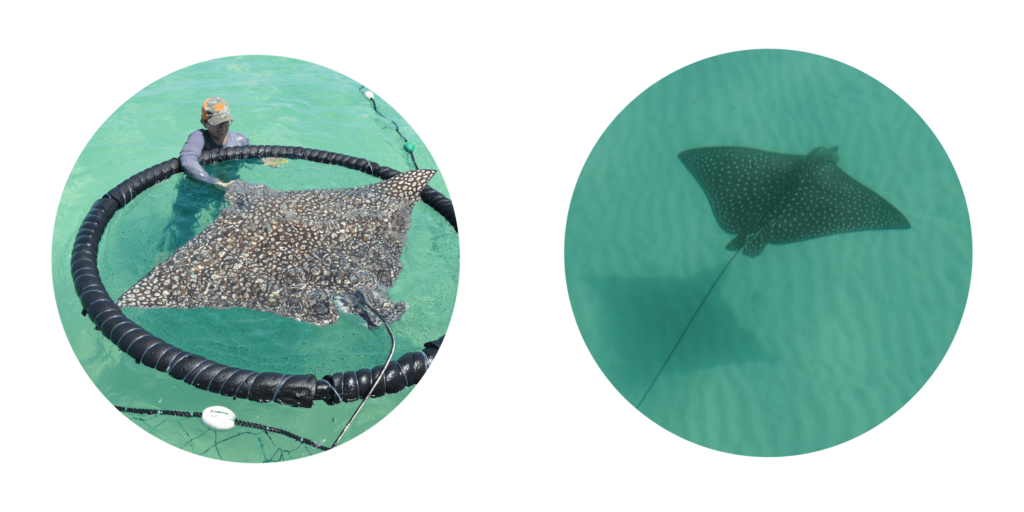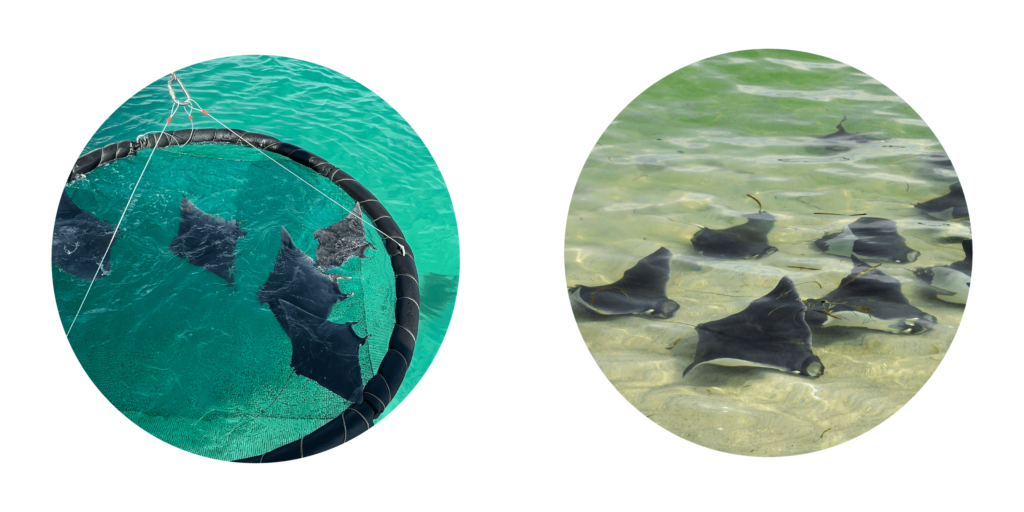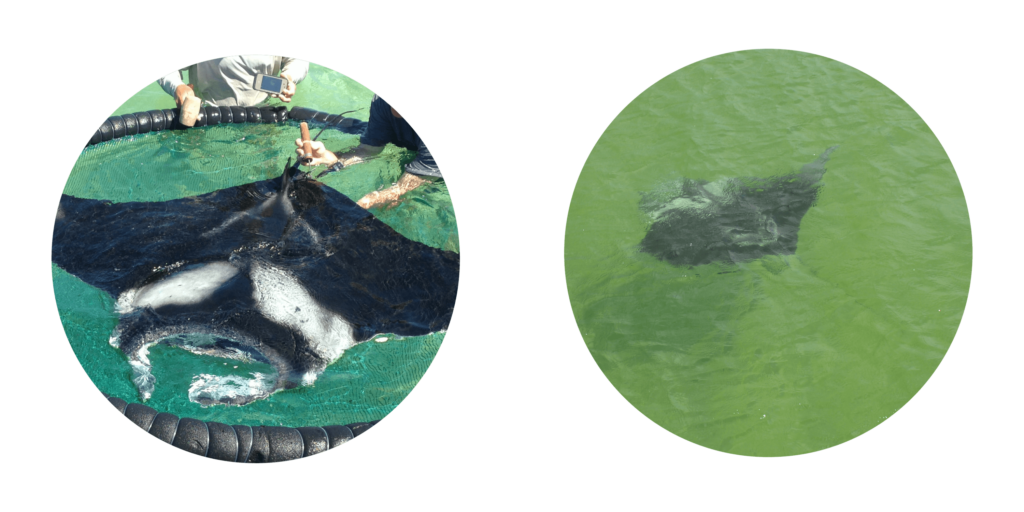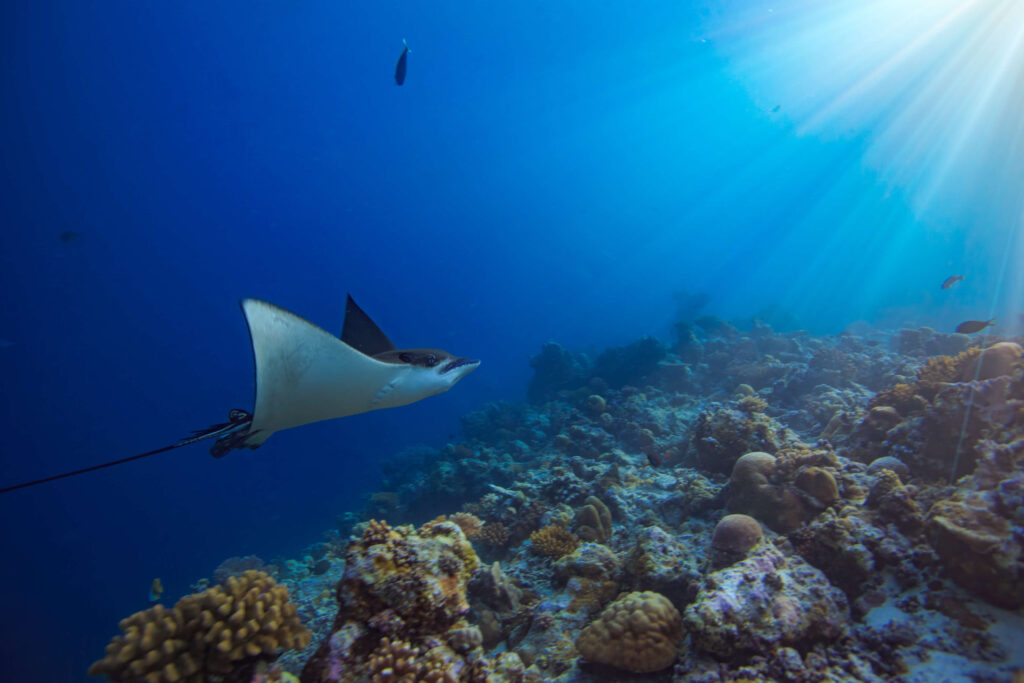Since 2009, Mote Researchers have been collecting data on three pelagic ray species: spotted eagle rays, manta rays and devil rays. All three are classified as “Endangered” on the International Union for Conservation of Nature (IUCN) Red List. Understanding their distribution and movement patterns in the Gulf of Mexico, Caribbean Sea and Western Atlantic Ocean is critical to inform conservation strategies.
Citizen science initiatives (when the public collects and reports data to researchers) can provide valuable information, especially on rare species such as manta rays and devil rays.
Have you seen any of these rays? Submit your sightings through our reporting forms. If you have any questions, please contact us.
Spotted eagle ray

- Small (2 ft) to large (7 ft) across wing tips
- Dark brown with white spots
- Duck’s bill head
- Single individuals or in groups
Report a spotted eagle ray sighting
Devil ray

- Small (2-4 ft) across wing tips
- Very dark, no spots
- Cephalic fins (rolled in “horns” or unrolled and forming a funnel)
- Mostly in groups
Manta ray

- Large (6-20 ft) across wing tips
- Dark with large white patches
- Cephalic fins (rolled in “horns” or unrolled like a funnel)
- Mostly single individuals
Questions?
For questions about Mote’s ray research, contact Mote Senior Biologist Kim Bassos-Hull: kbhull@mote.org
Should you encounter any problems with the forms, please email us: rayreports@mote.org






